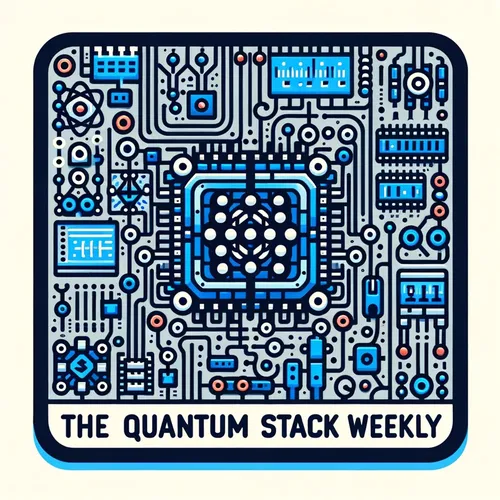Quantum Leap: Certified Randomness Redefines Security and Efficiency
- Author
- Quiet. Please
- Published
- Sat 17 May 2025
- Episode Link
- https://www.spreaker.com/episode/quantum-leap-certified-randomness-redefines-security-and-efficiency--66130201
This is your The Quantum Stack Weekly podcast.
This is Leo, your Learning Enhanced Operator, coming to you from deep within the supercooled, humming heart of The Quantum Stack Weekly. Today, I’m not starting with a preamble—we’re diving headlong into one of the most significant real-world quantum computing applications announced in just the past 24 hours.
Yesterday, global quantum hardware leader Quantinuum, in collaboration with JPMorganChase’s Global Technology Applied Research team, revealed something truly remarkable: the use of their 56-qubit System Model H2 quantum computer to achieve certified quantum randomness—a feat that has not only redefined what’s possible in quantum security but also outpaced classical solutions by a factor of 100. Yes, you heard that right: a hundredfold leap. This upgrade, leveraging high-fidelity trapped-ion qubits and all-to-all connectivity, represents a watershed moment. The practical implications for cybersecurity, advanced simulations, and financial modeling are impossible to overstate.
When I first saw the press release, I felt that electric tingle, the one you get when you realize you’re witnessing the collapse of the classical–quantum boundary—in real time. Certified randomness, for the uninitiated, isn’t just about unpredictable numbers. It’s about security so fundamental that even the most powerful classical adversary, given all the world’s computing power, still couldn’t anticipate the outcome. We’re talking cryptographic protocols that can finally shrug off attacks that used to keep CISOs awake at night.
Imagine, for a moment, standing next to that System Model H2. The air is cold—ions trapped in a near-perfect vacuum, lasers painting invisible patterns of logic. The soft whir of vibration-compensating equipment, the occasional click of a control relay. It’s in these conditions, far from the chaos of internet traffic and phishing scams, where the universe itself is coaxed into revealing truly random outcomes—certified by quantum mechanics.
This isn’t incremental progress. The previous gold standard for generating randomness involved either trusted external hardware or mathematical complexity—both ultimately vulnerable to breakthroughs in classical computing. Quantinuum’s demonstration, however, harnesses Aaronson’s randomness protocol, baked into quantum laws themselves, proving that no classical computer could have faked these results, no matter how cunning.
The mind behind Quantinuum, Dr. Rajeeb Hazra, framed it perfectly: this advances quantum computing “firmly into the realm of practical, real-world applications.” And it’s not just about theory or physics papers. This certified quantum randomness improves upon current solutions by providing a tamper-proof backbone for everything from financial transactions to national infrastructure, where even a hint of predictability could be catastrophic.
To appreciate this, let’s look at the bigger picture. Every time you send a secure message, or a bank transfers billions in digital assets, the foundation is randomness—keys, nonces, one-time pads. If that randomness is compromised, everything crumbles. Quantinuum’s system, with its 56 interconnected qubits, generates entropy at a level so unpredictable, it’s as if you asked the universe for a secret and it whispered back something even it didn’t know until the moment you measured it.
There’s a poetic symmetry here. Just yesterday, as Wall Street debated the future of AI-driven finance and a new cybersecurity breach dominated headlines, quantum computing delivered a solution that doesn’t just patch vulnerabilities—it renders whole classes of attacks obsolete.
Of course, the story isn’t just about hardware. The ongoing race—sometimes called the “efficiency race”—now sees startups, tech giants, and research institutions pouring resources into quantum algorithms that transcend classical...
